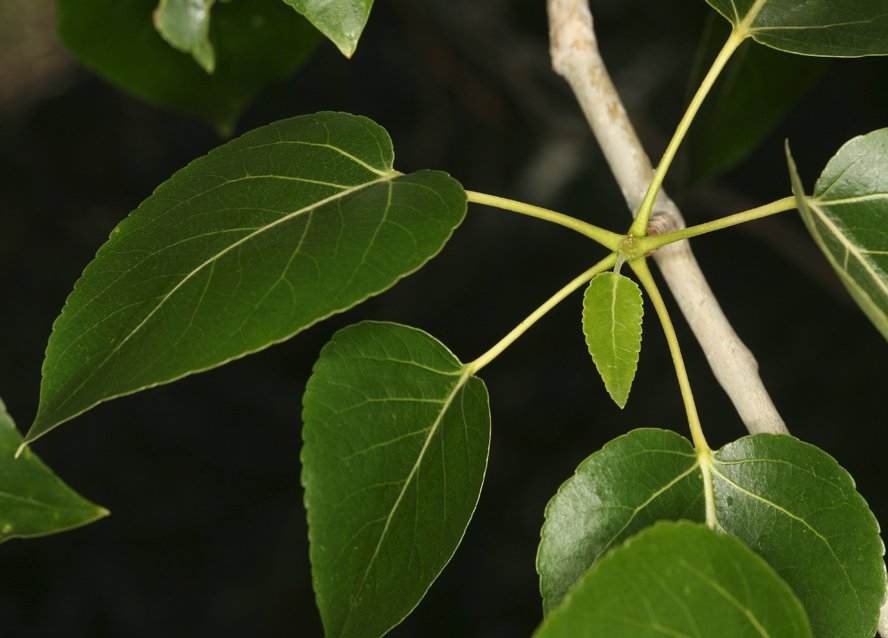

It is a large tree, growing to a height of 30 to 50 meters (98 to 164 ft) and a trunk diameter of over 2 m (6+1⁄2 ft), which makes it the largest poplar species in the Americas. It is normally fairly short-lived, but some trees may live up to 400 years. A cottonwood in Willamette Mission State Park near Salem, Oregon, holds national and world records. Last measured in April 2008, this black cottonwood was found to be standing at 47 m (155 ft) tall, 8.8 m (29 ft) around, with 527 points.
The bark is grey and covered with lenticels, becoming thick and deeply fissured on old trees. The bark can become hard enough to cause sparks when cut with a chainsaw. The stem is grey in the older parts and light brown in the younger parts. The crown is usually roughly conical and quite dense. In large trees, the lower branches droop downwards. Spur shoots are common. The wood has a light coloring and a straight grain.
The leaves are usually 7–20 centimeters (2+3⁄4–7+3⁄4 in) long with a glossy, dark green upper side and glaucous, light grey-green underside; larger leaves may be up to 30 cm (11+3⁄4 in) long and may be produced on stump sprouts and very vigorous young trees. The leaves are alternate, elliptical with a crenate margin and an acute tip, and reticulate venation. The petiole is reddish. The buds are conical, long, narrow, and sticky, with a strong balsam scent in spring when they open.
| Requirement | |
|---|---|
| Hardiness | 2,3,4,5,6,7,8,9 |
| Heat Zones | 2,3,4,5,6,7,8,9 |
| Climate Zones | 2, 3, 4, 5, 6, 7, 8 |
| Plant Type | Trees |
| Plant Family | Willow Family |
| Exposure | Full Sun, Partial Sun |
| Season of Interest | Spring, Early Spring |
| Height | 40' - 50' |
| Spread | 10' - 20' |
| Water Needs | Average |
| Maintenance | Average |
| Soil Type | Moist but Well-Drained, Loam, Acid |
| Characteristics | Deer Tolerant |
| Garden Styles | Coastal Garden, Formal Garden |
| Planting Place | Banks and Slopes, Wall-Side Borders, Walls and Fences |